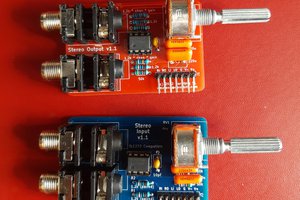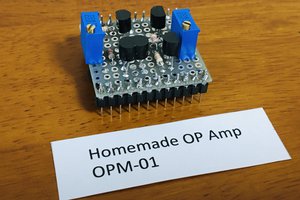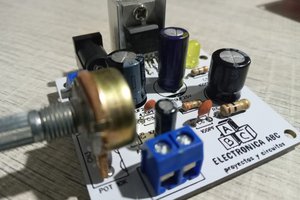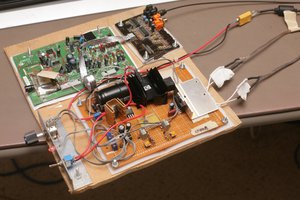The heart of the preamp is an LM386 dual op amp. Since the goal is simply line level outputs, we don't have to worry about output impedance a whole lot. Just about any op amp will work just fine for this.
Audio signals are bipolar. There are two ways you can amplify them. You can either use a bipolar power supply to power the amp or you can shift the audio upwards so that the maximum negative excursion is at or above 0 volts. While you can AC couple audio to achieve the latter, this requires a virtual ground configuration for the amp. This can really only be done in the inverting configuration, which means that if you don't want the audio to be inverted on the output, you have to use two inverting amplifier stages.
In addition to that, proper line level output is about 6 volts peak-to-peak. While USB-C can supply higher voltages, our current requirements are low enough that PD negotiation or a boost converter would be overkill. You could simply use a barrel connector instead of USB-C power with an arbitrary voltage, but that's a bit retrograde. Using a charge pump to invert the 5 volt supply to make a ±5v supply solves all of the problems and is easy to do.
Since we have a bipolar supply of sufficient voltage, we can use a simple non-inverting configuration. The gain is 6x (1 + 100k/20k), which for audio is 15 dB (20log₁₀[voltage gain]). The input is AC coupled with a cap to eliminate any input DC bias. But the problem with that is that it means that there is no DC bias on the op amp's positive input. This won't actually work in practice - you have to tie that input to ground with a bias resistor. The DC blocking capacitor and bias resistor form an RC low pass filter, so it's important for bass fidelity to pick values that result in a sufficiently low roll-off. 10 µF and 10 kΩ result in a nominal roll-off frequency of under 1 Hz.
The USB-C power supply starts with a special power-only USB C receptacle. There are no data pins connected - just the two Vbus, ground and CCx pins. Since we require 5v at less than 1A we can just use two 5.1kΩ pull-down resistors on the CCx pins. The shell is loosely coupled to ground in an effort to prevent ground loops. VBus is passed in through a ferrite bead to try to filter any supply noise.
 Nick Sayer
Nick Sayer
 David Moreno Montero
David Moreno Montero
 Mitsuru Yamada
Mitsuru Yamada
 ElectronicABC
ElectronicABC
 lion mclionhead
lion mclionhead